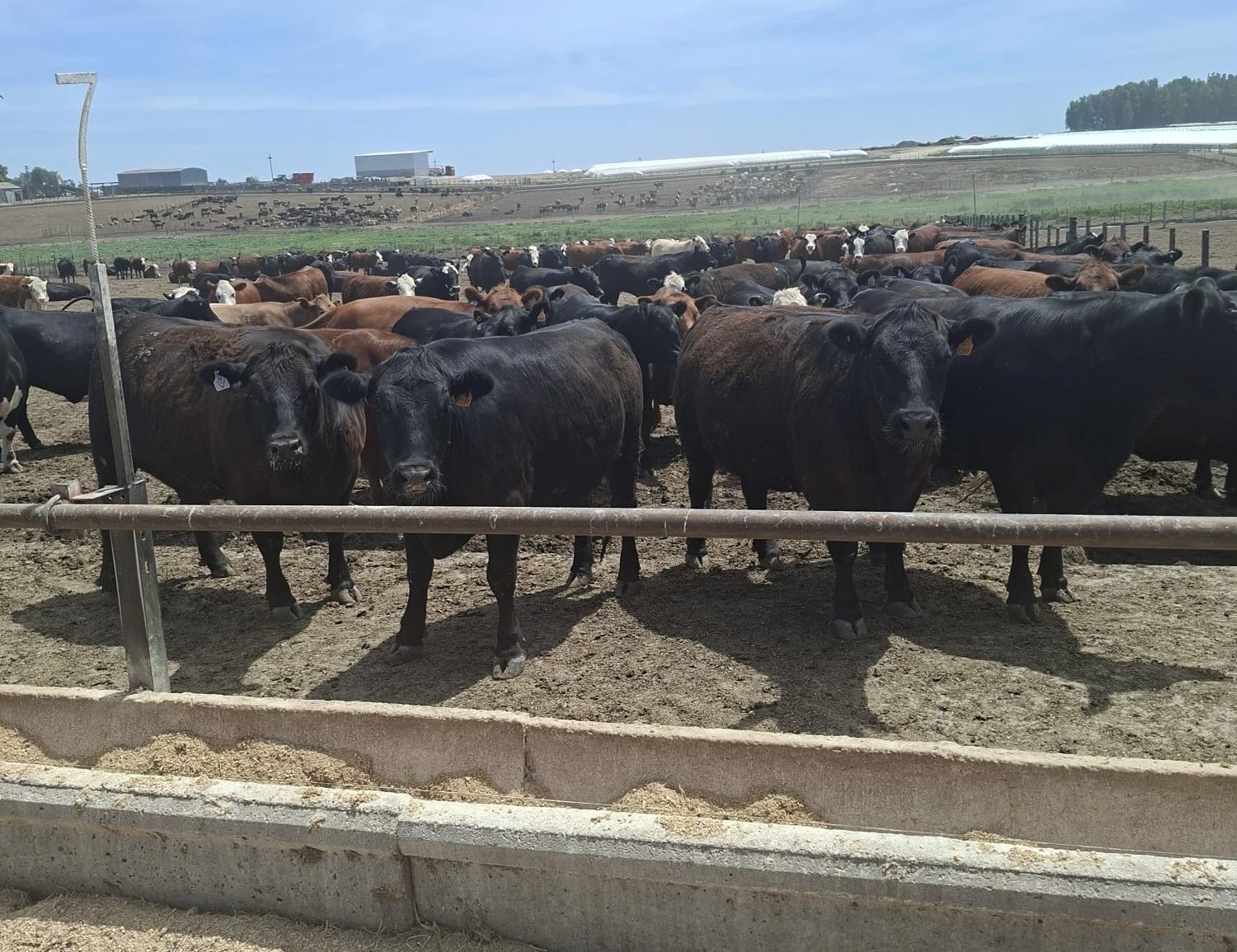The fine line between economic efficiency and animal welfare in feedlots in Uruguay
Keywords:
feedlot, animal welfare, beef cattle, economic efficiency, acidosis, UruguayAbstract
In Uruguay, the intensification of beef production has driven the growth of feedlot systems as a response to economic pressures and the demands of high-value markets. This article analyzes the tension between the economic efficiency of these systems and animal welfare. Through a literature review, the economic advantages are identified, such as higher profitability and a reduced slaughter age. Simultaneously, critical animal welfare challenges documented in Uruguay are exposed, including the lack of shade, excessive mud in pens, and a high incidence of metabolic disorders like ruminal acidosis, which is the leading cause of mortality. The analysis argues that economic efficiency and animal welfare are not opposing goals but are interdependent. Deficiencies in welfare, such as heat stress or management-related pathologies, negatively impact productivity and lead to direct economic losses. Therefore, the article concludes with a call to action for producers and technicians to consider improvements in infrastructure and management as a strategic investment that not only fulfills an ethical responsibility but also optimizes the sustainability and profitability of the business, thereby strengthening the brand image of Uruguayan beef.
References
ALENDE M. 2011. Bienestar Animal y reducción del estrés en el feedlot. Instituto Nacional de Tecnología Agropecuaria. Sitio Argentino de Producción Animal. 57:1-6.
https://www.produccion-animal.com.ar/etologia_y_bienestar/bienestar_en_bovinos/57-feedlot.pdf
ARIAS DÍAZ MV, Rucks Montoya PM. 2012. Análisis comparativo de tres productores de feedlots en los departamentos de Flores y Soriano en Uruguay. Tesis de Ingeniería en Administración de Agronegocios, Escuela Agrícola Panamericana, Zamorano. Honduras. Pp. 37.
https://bdigital.zamorano.edu/handle/11036/917
BANCHERO G, Chalkling D, Mederos A. 2016. Relevamiento de problemas sanitarios y de manejo durante la terminación en bovinos en sistemas de confinamiento en Uruguay. Veterinaria (Montevideo). 52(202):4-13.
http://www.scielo.edu.uy/scielo.php?script=sci_arttext&pid=S1688-48092016000200001
BLASCO A, Mateu AB. 2011. Ética y bienestar animal. Ediciones Akal. https://www.ciap.org.ar/Sitio/Archivos/Etica%20y%20Bienestar%20Animal.pdf
CLARIGET JM, Kelly AK, Banchero G, Keogh K, Kenny DA, Crosson P. 2024. Profitability, greenhouse gas emissions and feed-food competition of strategies to exploit compensatory growth in Uruguayan weanling-to-beef systems. Livestock Science. 288, e105553. https://doi.org/10.1016/j.livsci.2024.105553
CONFALONIERI OE, Moscuzza H, Rodríguez EM, Passucci JA. 2016. Patologías podales en ganado lechero y en feedlot del partido de Tandil, provincia de Buenos Aires, Argentina. Revista de la Facultad de Medicina Veterinaria y de Zootecnia. 63(1): 11-19. http://www.scielo.org.co/pdf/rfmvz/v63n1/v63n1a02.pdf
COSTABEL VH. 2020. Efecto del estrés calórico en el bienestar animal y la producción. Plan Agropecuario. 176:25-27.
https://www.planagropecuario.org.uy/uploads/magazines/articles/191_2972.pdf
ESPINOZA Alemán EDM. 2023. Seguimiento al cumplimiento de protocolos de manejo y sanidad animal establecidos en Feedlot finca El Rancho (Nuevo Carnic S.A), febrero – agosto 2023. Tesis de Licenciatura. Facultad de Ciencia animal. Universidad Nacional Agraria. Nicaragua. https://cenida.una.edu.ni/Pasantia/panl70a367.pdf
FRADE S, Fernández Turren G, Diéguez F. 2025. Cuota 481: Principales variables en el negocio de engorde a corral de bovinos en Uruguay. Archivos Latinoamericanos de Producción Animal. 33(1):e17.
https://ojs.alpa.uy/index.php/ojs_files/article/download/3462/2131
HUERTAS S, Gallo C, Galindo F. 2014. Motores de las políticas de bienestar animal en las Américas. Rev sci tech Off int Epiz. 33(1):55-66.
NAGARAJA TG, Chengappa MM. 1998. Liver Abscesses in Feedlot Cattle: A Review. Journal of Animal Science. 76(1):287–298. https://doi.org/10.2527/1998.761287x
NIN-PRATT A, Freiría H, Muñoz G. 2019. Productivity and efficiency in grassland-based livestock production in Latin America: The cases of Uruguay and Paraguay. Inter-American Development Bank. Working Paper Series No. IDB-WP-1024.
https://doi.org/10.18235/0001924
PORDOMINGO AJ. 2003. Gestión ambiental en el feedlot. Guía de buenas prácticas. Sitio Argentino de Producción Animal. Pp. 90. INTA Anguil, Argentina.
WAGNER JJ, Archibeque SL, Feuz DM. 2014. The modern feedlot for finishing cattle. Annual Review of Animal Biosciences. 2:535-554.

Published
Issue
Section

This work is licensed under a Creative Commons Attribution-NonCommercial 4.0 International License.




